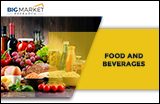
Report on the Chinese industry for carbonated beverages 2017-2022
- ASK3247197
- 98 Pages
- October 2017
- Food and Beverages
Carbonated beverages refer to beverages with carbon dioxide added to them, and are one of the most common beverage types available on the market.
The Chinese industry for carbonated beverages had a total of XX companies in 2016. The industry recorded a total of CNY XX billion in sales income, a XX% growth over the previous year. The industry saw total profits of CNY XX billion in sales income, a XX% decrease over the previous year.
As the most populated country in the world, the Chinese market has always been one of the most heavily scrutinized markets in the world. Changing tastes, a slowing economy, fierce competition and trends towards healthy drinks have caused the industry to slow down. Many consumers have made the leap from carbonated drinks to alcoholic drinks, fruit juices and tea beverages based on the perception of carbonated drinks being unhealthy.
Despite the decline of the industry in China, this does not truly mean that the manufacturing industry for carbonated drinks is entering a recession. While the rise of other beverages indicates that Chinese consumers have begun to look for new tastes, other beverage industries do not possess the momentum to replace the carbonated beverage industry in its entirety. The carbonated beverage industry is expected to produce a total of XX million tons and achieve XX billion in sales by 2022.
1 Chinese carbonated beverage market analysis
1.1 Market overview
1.1.1 Market overview
1.1.2 Current developments
1.1.3 Sugar-free carbonated beverages in China
1.1.4 Development methods analysis
1.1.5 Development trends
1.2 Production analysis
1.2.1 Production volumes
1.2.2 Regional production
1.3 Retail market analysis
1.3.1 Retail scale
1.3.2 Cokes
1.3.3 Fruit-flavored carbonated beverages
1.3.4 Low-calorie carbonated beverages
1.3.5 Taste distribution
1.4 Problems and strategies in the industry
1.4.1 8 challenges
1.4.2 Innovation
1.4.3 SME growth strategies
2 Chinese carbonated beverage industry economic operations analysis
2.1 General overview
2.1.1 Number of companies
2.1.2 Sales income
2.1.3 Total profits
2.1.4 Losses
2.2 Operational analysis
2.2.1 Profitability
2.2.2 Debt repayment capability
2.2.3 Operational capability
2.3 Industry costs analysis
2.3.1 Sales costs analysis
2.3.2 Sales fees
2.3.3 Cost management
2.3.4 Financial fees
3 Carbonated beverage market competition analysis
3.1 Competitive structure
3.1.1 Development overview
3.1.2 Supply scale
3.1.3 Demand scale
3.1.4 Prices
3.2 Segment market competitive analysis
3.2.1 Tea beverages
3.2.2 Cold tea
3.2.3 Bottled water
3.2.4 Fruit juice
3.2.5 Lactobacillus drinks
3.3 Problems in the industry and countermeasures
3.3.1 New products
3.3.2 Competitive strategy discussions
3.3.3 Competitive strategy groupings
3.3.4 Development trends and competitive planning
3.4 Competitiveness in the carbonated beverage market
3.4.1 Competitive analysis
3.4.2 Pepsi and Coca Cola’s influence on Chinese firms
4 Consumer analysis
4.1 Beijing
4.2 Tianjin
4.3 Shanghai
4.4 Changsha
4.5 Guangzhou
4.6 Shenzhen
5 Key companies
5.1 Coca Cola
5.1.1 Development overview
5.1.2 Main products
5.1.3 Operational analysis
5.1.4 Developments in China
5.1.5 Marketing strategies
5.2 Pepsi
5.2.1 Development overview
5.2.2 Main products
5.2.3 Operational analysis
5.2.4 Development strategies
5.2.5 Developments in China
5.3 Wahaha
5.3.1 Development overview
5.3.2 Main products
5.3.3 Operational analysis
5.3.4 Competitive advantages
5.3.5 Development strategies
6 Development prospects for the Chinese carbonated beverage market
6.1 Development prospects
6.1.1 Market trends and consumer preferences
6.1.2 Market growth potential analysis
6.1.3 Development trends
6.2 Market prospects
6.2.1 Market maturation
6.2.2 New challenges from newer beverages on the market
6.2.3 Accelerated development towards health-conscious beverages
6.3 Market predictions
6.3.1 Supply predictions
6.3.2 Income predictions
6.3.3 Sales predictions
Similar Reports
Driven by improving living standards of people and a fast-growing macro-economy, China has remained the largest beer-consuming country worldwide for the 12th consecutive year since 2003, and the largest beer-producing nation globally in the past years. This report focuses on systematic evaluation and analysis of Internal Risks (arising within the industry development itself) and External Risks (ar...
- Publish Date: November 26, 2014
- $800
Summary Based on products type, the report describes major products type share of regional market. Products mentioned as follows: By Type Microparticulated Protein Modified Whey Protein Concentrate Others Based on region, the report describes major regions market by vendor, products and application. Regions mentioned as follows: North America Europe Asia RoW Based on application, the repor...
- Publish Date: March 1, 2017
- $840
Summary The global Oat Protein market is estimated to reach 1.4 K MT in 2017. The objective of report is to define, segment, and project the market on the basis of type, application, and region, and to describe the content about the factors influencing market dynamics, policy, economic, technology and market entry etc. Based on products type, the report describes major products type share of regio...
- Publish Date: April 15, 2017
- $840